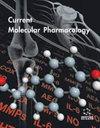Positive Regulation of Osteoblast Proliferation and Differentiation in MC3T3- E1 Cells by 7,3′,4′-Trimethoxyflavone
IF 2.9
4区 生物学
Q3 BIOCHEMISTRY & MOLECULAR BIOLOGY
引用次数: 0
Abstract
Objectives: Increasing ratio of bone fragility, and susceptibility to fractures constitutes a major health problem worldwide. Therefore, we aimed to identify new compounds with a potential to increase proliferation and differentiation of osteoblasts. Methods: Cellular and molecular assays, such as ALP activity, alizarin staining, and flow cytometry were employed to check the effect of TMF on osteogenesis. Moreover, gene expression analysis of certain important genes and transcriptional factors was also performed. Results: Our findings report for the first time that 7,3′,4′-trimethoxyflavone is capable of enhancing proliferation, and differentiation in osteoblast cells. Results from flow cytometry analysis also indicated that TMF increases the number of cells in S-phase. Furthermore, treatment with TMF altered the expression of osteogenic genes, OCN and Axin-2 indicating possible activation of Wnt signaling pathway. Conclusion: Taken together, this study identified that 7,3′,4′-trimethoxyflavone has the potential to enhance osteoblast proliferation and differentiation, possibly due to the activation of Wnt/β-catenin pathway. Thus, demonstrating TMF as naturally occurring agent to promote osteogenesis and prevention of bone fragility, and related disorders.7,3′,4′-三甲氧基黄酮对 MC3T3- E1 细胞成骨细胞增殖和分化的正向调节作用
目的:骨脆性和骨折易感性的比例不断增加是全球范围内的一个主要健康问题。因此,我们旨在找出具有增加成骨细胞增殖和分化潜力的新化合物。研究方法采用 ALP 活性、茜素染色和流式细胞术等细胞和分子检测方法来检验 TMF 对成骨作用的影响。此外,还对某些重要基因和转录因子进行了基因表达分析。结果我们的研究结果首次报道了 7,3′,4′-三甲氧基黄酮能够促进成骨细胞的增殖和分化。流式细胞仪分析的结果也表明,TMF 能增加处于 S 期的细胞数量。此外,TMF 还能改变成骨基因 OCN 和 Axin-2 的表达,这表明 Wnt 信号通路可能被激活。结论综上所述,本研究发现 7,3′,4′-三甲氧基黄酮具有促进成骨细胞增殖和分化的潜力,这可能是由于激活了 Wnt/β-catenin 通路。因此,TMF 是促进成骨和预防骨质脆弱及相关疾病的天然药物。
本文章由计算机程序翻译,如有差异,请以英文原文为准。
求助全文
约1分钟内获得全文
求助全文
来源期刊

Current molecular pharmacology
Pharmacology, Toxicology and Pharmaceutics-Drug Discovery
CiteScore
4.90
自引率
3.70%
发文量
112
期刊介绍:
Current Molecular Pharmacology aims to publish the latest developments in cellular and molecular pharmacology with a major emphasis on the mechanism of action of novel drugs under development, innovative pharmacological technologies, cell signaling, transduction pathway analysis, genomics, proteomics, and metabonomics applications to drug action. An additional focus will be the way in which normal biological function is illuminated by knowledge of the action of drugs at the cellular and molecular level. The journal publishes full-length/mini reviews, original research articles and thematic issues on molecular pharmacology.
Current Molecular Pharmacology is an essential journal for every scientist who is involved in drug design and discovery, target identification, target validation, preclinical and clinical development of drugs therapeutically useful in human disease.
 求助内容:
求助内容: 应助结果提醒方式:
应助结果提醒方式:


